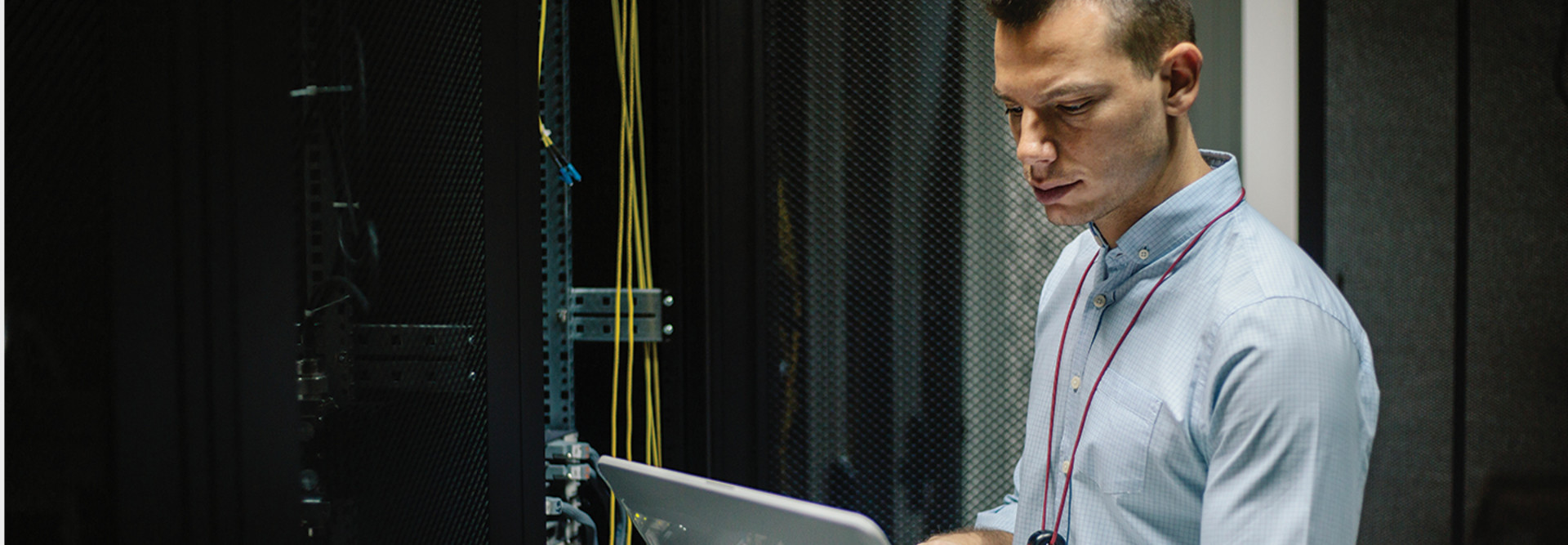With the new school year quickly approaching (in some states, it’s already upon us) and the debate about back-to-school strategies stretching on, it’s imperative that IT managers and administrators consider the state of their infrastructure and how it should be optimized to best support remote learning.
The big question for them is: Do you have the IT backbone to deliver remote learning reliably and efficiently?
This is a tough question that will take some thought, but it’s wise to start considering the answer now. Fortunately, there are solutions for meeting the challenges posed by today’s capacity surge and tomorrow’s uncertain future. These can be executed in three phases.
LEARN MORE: Find out how to create an infrastructure for a remote-ready school.
Phase 1: Establish the System’s Baseline First
At the most fundamental level, IT teams must take stock of servers and networking gear, along with UPSs, cooling units, racks and power distribution units. Based on what’s known from the spring’s forced remote learning experiences, it’s important to ask whether existing IT infrastructure can support the school’s network or if more capacity is needed for the long term.
To support a potential explosion of rich media transferred across their networks, educational institutions will likely have to invest in more advanced networking equipment. They’ll also need to invest in infrastructure power and cooling devices that help maintain network uptime.
That said, this is a critical question that, in many cases, should be evaluated with input from the teachers themselves. How do they plan to conduct their remote sessions? What technology are they planning to use? And what does it require of the IT team from an infrastructure perspective?
Once these more immediate, baseline-setting questions have been answered, the next phase will be to ensure IT systems remain in good health.
DISCOVER: Here’s why schools need to modernize their data center.
Phase 2: Ensure IT Is Up to the Task
Beyond ramping up capacity (if needed), it’s equally critical to ensure a system is generally up to the task of supporting this unprecedented new normal. After all, a day of downtime is far more disruptive for 100 percent virtual learning than when students are sitting in classrooms. As we look toward an ever-uncertain future, it’s imperative that IT systems are maintained from a long-term perspective rather than relying on quick-fix strategies.
This effort should begin with the low-hanging fruit of servicing and modernizing equipment. Make sure to keep current on service contracts and preventive maintenance, but also focus on preparing for future uncertainty. Plan to replace any UPS batteries approaching five years of use, and any UPS approaching 10 years of use. And if there’s increased density, check whether the accompanying cooling equipment is ready for more heat.
READ MORE: Learn how K–12 IT leaders plan for routine technology refreshes.
Phase 3: Look Ahead to the Future
Beyond the simple services, consider whether the IT team’s mission — the big picture — has changed at all. There’s a good chance IT teams may want to revisit the current system’s design. Perhaps an older on-premises system should be hybridized for more rapid scalability. Or maybe it’s better to swap out aging IT equipment for new, rapidly scalable solutions.
Part of that system redesign evaluation should also include the final building block of a successful pandemic-era hybrid learning scenario: the monitoring and management of this infrastructure. After all, it’s often easier to scale up the IT backbone a lot faster than the IT team itself. With all this added infrastructure, there’s more equipment to monitor and maintain, but not necessarily enough people to be there onsite.
Fortunately, it’s now possible to be in multiple places at once using remote monitoring tools and services. These tools consist of hardware sensors that keep tabs on temperature, power quality, access and other key conditions. They also use software and analytics to sense trends and anomalies, and then alert admins to anything important. With IT staff working from home, the ability to detect and resolve issues remotely is even more essential. These monitoring tools not only alert staff to issues but also diagnose faults, minimizing the need to travel to the site to find out what’s happening.
The debate about remote learning is showing no signs of slowing down. The pandemic’s evolving severity and consequences adds a significant unknown to the equation. The ability for school district IT teams to support hybrid learning approaches in the interim requires IT system resiliency, high availability and the capacity to support the volume of data and media transfers across networks.
Following the phases outlined above, school district IT professionals around the country can better prepare for the 2020-2021 school year and ultimately better serve student communities.











